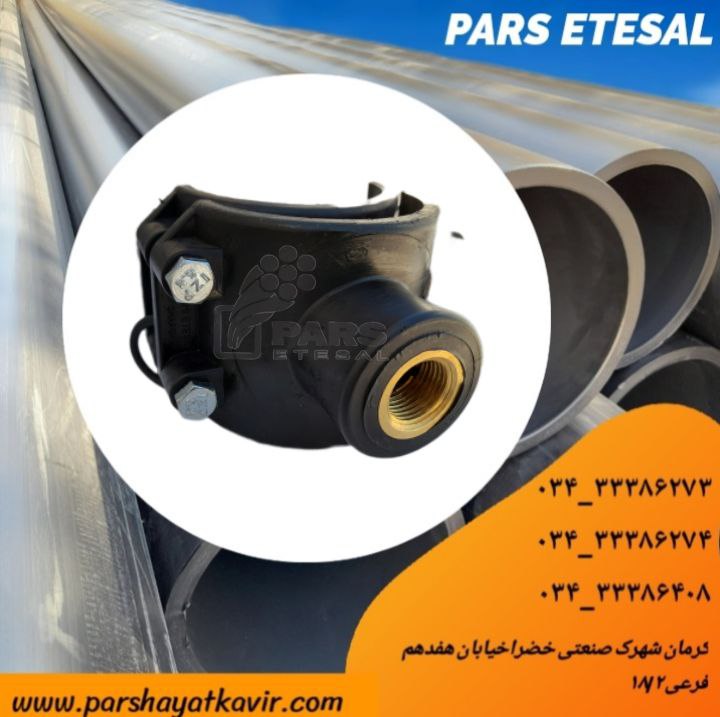A polyethylene belt with a brass branch is the same as a polyethylene belt, with the difference that it is made of brass to increase stability. For creating a branch, polyethylene and polypropylene are used. These belts are placed on a pipe and are considered branching. The polyethylene belt is made of three parts: the lower saddle (lower part), the upper saddle (upper part), and the connecting washer. The lower and upper parts of these joints are waterproofed and stabilized by a connecting washer and with the aid of four bolts on four sides of the polyethylene belt. This washer is placed inside the branched belt. In these belts, if they are executed correctly, no leakage is observed. As a result, they can be utilized for many years. Polyethylene belt, or in other words, polyethylene branch belt, is enumerated as one of the important and applicable joints. These belts are formed of two semi-circle pieces of polyethylene. These pieces are located on a pipe and are fastened to each other by two or several bolts and nuts in the holes in their sides.
These joints are made of polypropylene to be flexible enough. Of course, by hearing their name, people suppose that these belts are firm and hard. But they are especially flexible. These belts are different due to differences in their structure.
The application of these belts is to create branches for polypropylene and polyethylene pipelines. They are generally used in projects like agriculture, transfer of drinking water in the cities and villages, drip and rain irrigation, superficial irrigation, and gardening. The outputs of this branching are different and are supplied depending on the customer’s needs. Using a polyethylene belt is performed at a very high speed and with no need for a polyethylene welding device. Moreover, these belts are easily replaceable if damaged, while the welding joints are connected with a lower speed since they need warming and special devices. If polyethylene bolted joints are used according to the producer standards, they don’t leak or pierce. These joints are very safe and resistant against cracking, pressure, and fracture. They show a fundamental resistance against chemicals like acids and bases, and are resistant to corrosion.
These cases are the uses of polyethylene belts. But more than others, these products are used in the agricultural industries and drip irrigation.
Pars Etesal Shargh Company produces and offers various types of polyethylene brass branch belts in sizes of 32 to 160 and completely standard from first-grade materials.
If you need consultation and would like more information about the products, you may contact the Pars Etesal Shargh experts through communication channels.
Factory Phone No.: +98 34 33386273


